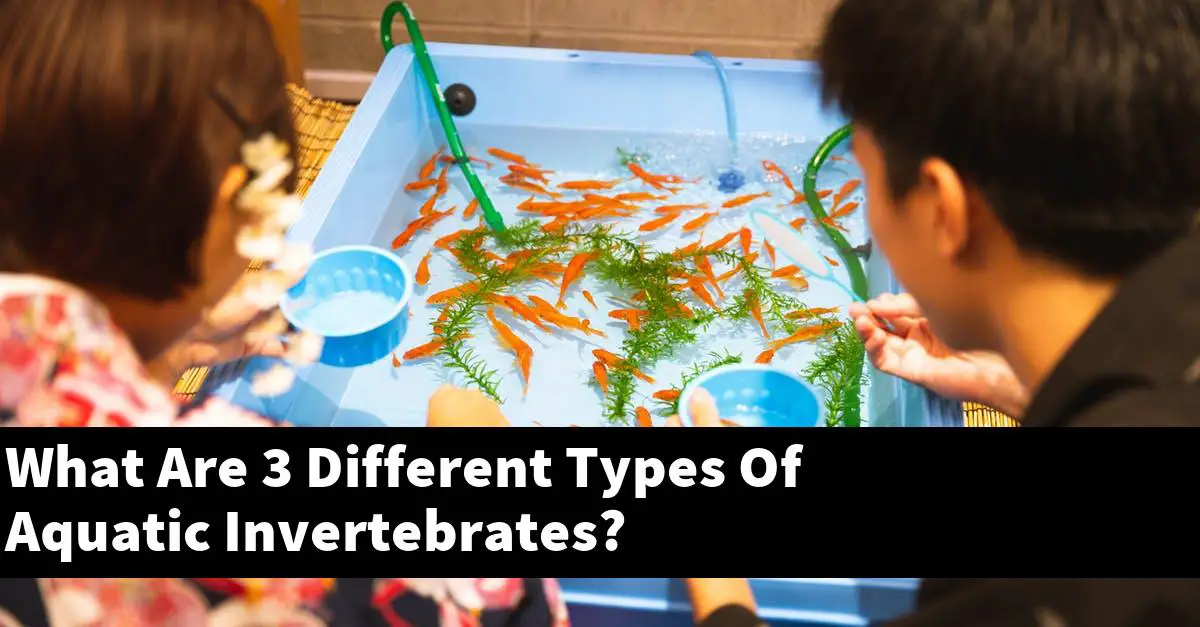Aquatic invertebrates are animals that live in water and lack a backbone. There are many different types of aquatic invertebrates, including mollusks, crustaceans, and arthropods.
Why are aquatic invertebrates important?
Aquatic invertebrates play an important role in aquatic ecosystems because they are able to perform a variety of essential functions. These functions include providing food for fish, invertebrates, and amphibians, serving as a food source for predators and parasites, and regulating water temperature and pH. Aquatic invertebrates can also play an important role in the cycling of nutrients and pollutants in aquatic systems.
Fluval Bug Bites Bottom Feeder Fish Food, Granules for Small to Medium Sized Fish, 1.60 Oz., A6586
$3.81 (as of June 30, 2025 00:02 GMT +03:00 - More infoProduct prices and availability are accurate as of the date/time indicated and are subject to change. Any price and availability information displayed on [relevant Amazon Site(s), as applicable] at the time of purchase will apply to the purchase of this product.)Ultum Nature Systems Ultra Clear Rimless Aquarium - Low Iron Glass Fish Tank with 45° Mitered Edges, 5mm-15mm Thick, Leveling Mat Included - 20T, 5mm Glass (7.87x7.87x11.81IN | 20x20x30CM)
$65.99 ($65.99 / Count) (as of June 30, 2025 00:05 GMT +03:00 - More infoProduct prices and availability are accurate as of the date/time indicated and are subject to change. Any price and availability information displayed on [relevant Amazon Site(s), as applicable] at the time of purchase will apply to the purchase of this product.)Boyd Enterprises CPGNnano5 Chemi-Pure Green Nano 5 Pack Aquarium Filtration
17% OffWhat are examples of aquatic invertebrates?
The most common aquatic invertebrates are insects, but there are also creatures like jellyfish, worms, and tadpoles. Aquatic invertebrates are organisms that live in water or other moist environments.
They are able to move around with ease and can breathe through their skin. Some of the most common aquatic invertebrates include mosquitoes, beetles, and water fleas.
What do invertebrates eat?
Invertebrates are animals without a backbone. They include everything from tiny water droplets to towering ants.
Some invertebrates eat other invertebrates, while others eat plants or even other animals.
Many invertebrates are herbivores, which means that they eat plants. Some invertebrates are carnivores, which means that they eat other animals.
Some invertebrates, like shrimp, are omnivores, which means that they eat both plants and animals.
Invertebrates have many different ways of eating. Some invertebrates eat by sucking up water droplets from the ground.
Other invertebrates eat by burrowing into the ground and eating the roots of plants. Some invertebrates eat by crawling up onto the surface of plants and sucking the juice from the leaves.
What are 3 invertebrates that live in water?
There are three invertebrates that live in water: the bullfrog, the caddisfly, and the common water strider. All three of these invertebrates are insects.
The bullfrog is a small, brown amphibian that lives in slow-moving water sources such as rivers, creeks, and ponds. The caddisfly is a small, black insect that lives in fast-moving water sources such as streams, rivers, and canals.
The common water strider is a small, brown insect that lives in water sources that have a lot of sediment in them, such as ponds and lakes.
What do aquatic invertebrates eat?
Aquatic invertebrates eat a variety of things, including microorganisms, plant material, and detritus. Plant material is generally the most important component of their diet, and they are particularly adept at consuming small particles and fragments.
Invertebrates can also consume large quantities of water, which helps them obtain the necessary nutrients and minerals they need to survive.
What are the 3 invertebrates?
Invertebrates are animals that lack a vertebral column. This includes most jellyfish, sea anemones, and corals.
Insects, spiders, and centipedes are all invertebrates.
How many aquatic invertebrates are there?
Aquatic invertebrates are any invertebrates that live in or near water. This includes things like crustaceans, mollusks, and echinoderms.
There are a lot of different types of aquatic invertebrates, so it’s hard to give a precise number. However, it’s likely that there are a lot more aquatic invertebrates than land invertebrates.
Conclusion
There are three different types of aquatic invertebrates, which include mollusks, crustaceans, and arthropods. Mollusks are a type of invertebrate that includes creatures such as snails, clams, and squid.
Crustaceans are another type of invertebrate that includes creatures such as crabs, lobsters, and shrimp. Arthropods are the last type of invertebrate and include creatures such as insects, spiders, and centipedes.




















